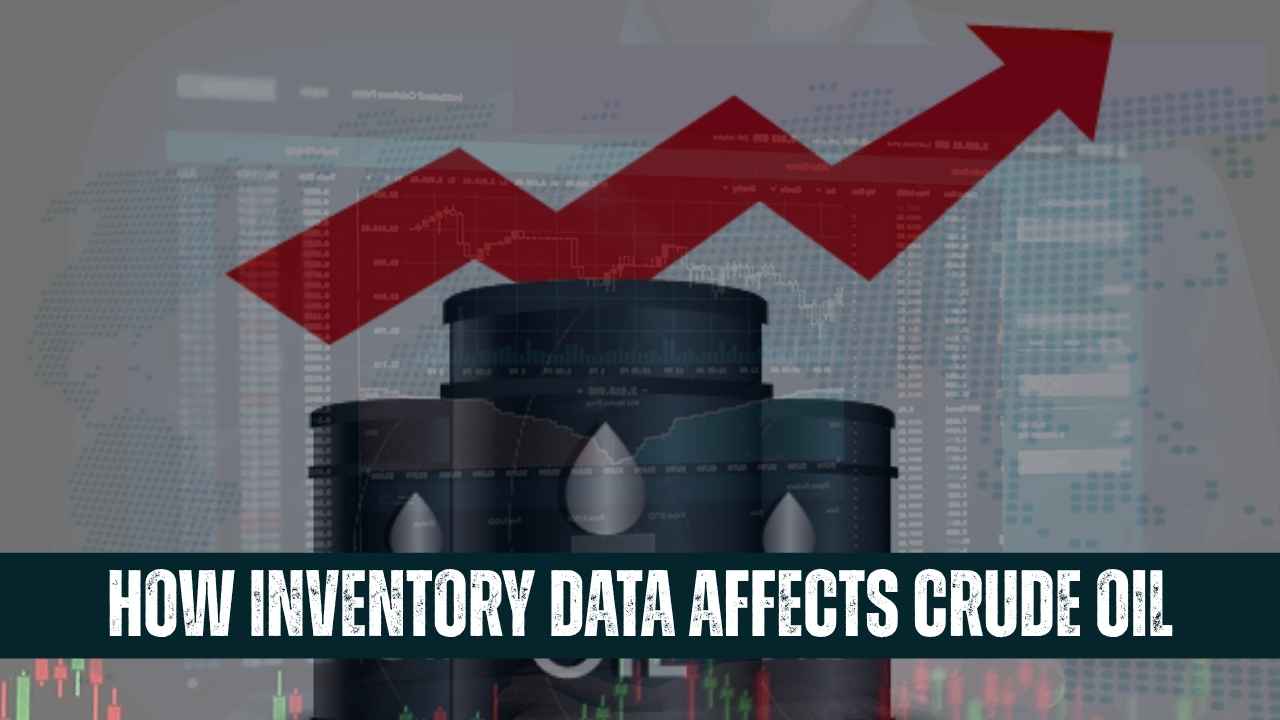Crude oil has been referred to as the backbone of the world economy. It fuels vehicles, runs factories, and warms homes. Since numerous businesses rely on it, fluctuations in oil prices trickle into companies and households. One of the most critical indicators companies, governments, and traders closely monitor is crude oil inventory data—a measure of how much oil is idle in storage worldwide. In this article, we explain what it is, how it affects crude oil prices, and why it is significant, particularly for a nation like India.
India’s Crude Oil Dependency
- Growing Consumption: As India’s economy expands and its population grows, demand for energy rises. More cars on the road, factories running 24/7, and new homes to heat all push up oil consumption.
- Heavy Reliance on Imports: India produces only a small amount of the oil it consumes. In FY25, it imported 89.1% of its crude oil requirements, making the nation extremely vulnerable to fluctuations in international oil prices.
- Impact on Businesses: Government-owned Oil Marketing Companies (OMCs) like Indian Oil Corporation, Bharat Petroleum, and Hindustan Petroleum refine and distribute fuel across the country. When crude prices increase, their costs also rise. Increased fuel prices then filter down to hit airlines, chemical manufacturers, paint firms, and infrastructure projects.
Since India relies so heavily on oil imports, even a slight fluctuation in world prices can translate to a dramatic shift in India’s import bill and in daily fuel prices.
What Is Crude Oil Inventory Data?
- Definition: Crude oil inventory data (also called stockpile data) measures how many barrels of unrefined oil are held in storage tanks, ships, and terminals.
- Units: Inventories are tracked in barrels (1 barrel = 159 liters).
- Release Schedule:
- In the United States, the U.S. Energy Information Administration (EIA) publishes weekly figures every Wednesday. The American Petroleum Institute (API) releases its own weekly report, usually a day earlier.
- The International Energy Agency (IEA) issues a monthly report covering crude stocks in 37 OECD countries.
By comparing one week (or month) to the next, analysts see whether inventories have risen (a “build”) or fallen (a “draw”).
How Inventory Data Influences Oil Prices
- Inventory Build (Rising Stocks)
- Signal of Weak Demand: If more oil is stored than used, it suggests lower demand. Traders worry that supply is outpacing consumption.
- Price Reaction: To clear the excess supply, sellers may cut asking prices. Benchmark crude grades such as Brent and West Texas Intermediate (WTI) often slip lower.
- Inventory Draw (Falling Stocks)
- Signal of Strong Demand: A decline in stocks means consumption is outpacing production or imports.
- Price Reaction: Buyers compete for fewer barrels. Prices tend to rise as traders anticipate tighter supplies.
- Other Factors at Play
- Geopolitics: Wars, sanctions, or political unrest in oil-producing regions can shift prices irrespective of inventory levels.
- Seasonal Demand: Summer driving seasons, winter heating needs, and monsoon-related demand in Asia all affect how inventories move.
- Production Levels: OPEC+ agreements, U.S. shale output, and offshore drilling rates also shape global supply.
Inventory data is therefore one of several key indicators that markets use. But because it is updated more frequently than many other reports, it often causes sharp price swings in the short term.
Impact of Global Inventory Data on India
- Import Cost Fluctuations
- When global inventories rise and prices fall, India pays less for each barrel imported. This can lower fuel costs at the pump and reduce inflationary pressure.
- Conversely, when inventories decline and prices climb, India’s import bill swells.
- Currency Exchange Amplification
- Oil trades in U.S. dollars. A weaker Indian rupee means India needs more rupees to buy the same amount of oil.
- If inventories draw down and crude prices rise at the same time the rupee weakens, the combined effect can sharply increase India’s fuel import expenses.
- Budget and Trade Deficit
- Higher oil import bills widen India’s trade deficit (the difference between what it imports and exports).
- A larger trade deficit can put downward pressure on the rupee and force the government to reallocate budget funds to subsidize fuel or support OMCs.
Crude Oil Prices and the Broader Economy
- Fuel Prices and Inflation: Crude oil is the main cost component of petrol and diesel. When oil prices go up, fuel prices usually follow quickly. Higher transport and logistics costs then feed into the price of goods and services across the economy, leading to higher inflation.
- OMC Profitability: State-run OMCs often operate on tight margins. Volatile crude prices make it difficult for them to set retail prices that cover cost without upsetting consumers or the government.
- Business Costs: Sectors like airlines, shipping, infrastructure, chemicals, and paints rely on stable fuel prices. Rising oil costs reduce their profitability and can slow down investment and expansion.
- Consumer Spending: When households spend more on fuel and energy, they have less left over for other goods. Slower consumer spending can dampen economic growth.
Conclusion
Crude oil inventory data might sound like a wonky metric destined for traders’ tickers and analysts’ spreadsheets. But for an import-based economy like India’s, it has real-world significance. Weekly and monthly reports of inventory signal when the world supplies are tightening or easing up—information that translates rapidly into greater or lesser prices at the pump, influences inflation, and affects almost every corner of the economy. By monitoring inventory builds and draws closely, policymakers, companies, and consumers can better predict price movements and prepare accordingly. Comprehending this connection between shares and prices is critical to anyone, from the financial director in Mumbai to the farmer in a rural village, who senses the impact of every rupee being spent on fuel.











